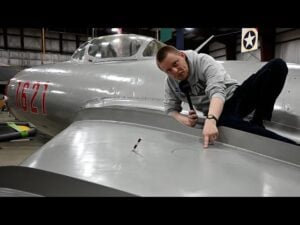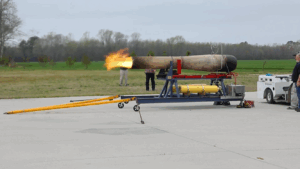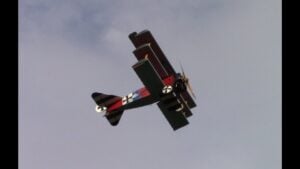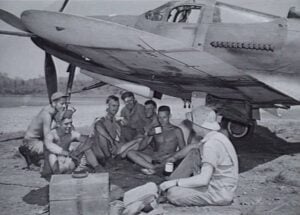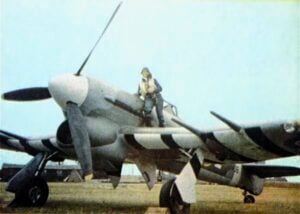The Perils of a Waist Gunner Aboard the B-17 in World War II
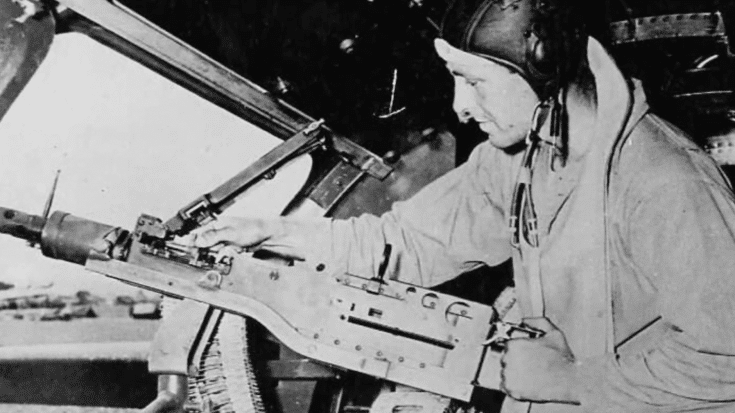
HistorybehindtheBlade / YouTube
The position of a waist gunner aboard the B-17 Flying Fortress during World War II was one of the most hazardous roles in aerial combat. Tasked with defending the bomber’s vulnerable sides from enemy aircraft, these gunners faced relentless attacks, cramped quarters, and extreme conditions. This article explores the challenges, responsibilities, and sacrifices of the waist gunner, offering a closer look at one of the most dangerous jobs in air warfare.
Critical Role and Conditions of the B-17 Waist Gunner.

The role of the waist gunner was critical to the survival of the B-17. Positioned on either side of the bomber, waist gunners operated .50 caliber machine guns, providing defense against enemy fighters attempting to exploit the aircraft’s weaker flanks. German planes, such as the Messerschmitt Bf 109 and Focke-Wulf Fw 190, often targeted these areas, making the gunners’ task essential to the mission’s success. Waist gunners worked in tandem to create overlapping fields of fire, a strategy that improved their effectiveness. The need for this role became apparent early in the war when bomber formations suffered heavy losses over Europe. Adding waist gunners bolstered the B-17’s defensive firepower, even though their exposed position made them vulnerable to enemy fire and shrapnel. Their role was indispensable in the bomber’s overall strategy of mutual defense.
Operating in the waist gunner’s position was physically demanding and fraught with discomfort. The workspace was a narrow, unheated section of the fuselage. At altitudes of 25,000 feet, temperatures could drop to minus 40 degrees Fahrenheit, and the lack of pressurization required gunners to wear bulky oxygen masks and electrically heated suits. Despite these precautions, frostbite remained a constant threat. The confined space was further crowded with ammunition boxes and gun mounts, forcing gunners to contort their bodies into awkward positions to aim and fire their weapons. The bomber’s thin aluminum skin provided little protection, leaving the gunners exposed to incoming fire and debris from nearby explosions. Reloading ammunition added another layer of difficulty, as the heavy belts required precise handling under chaotic conditions. The physical strain of firing the .50 caliber guns for extended periods left many gunners exhausted by the end of each mission.
Challenges and Responsibilities of the B-17 Waist Gunner in Combat

The speed and intensity of aerial combat placed immense pressure on waist gunners. Enemy fighters could close the distance from a thousand yards to point-blank range in mere seconds. In that brief window, gunners had to identify targets, aim, and fire, all while the bomber shook violently from turbulence, flak, and evasive maneuvers. Training helped prepare them to lead targets and account for bullet drop, but the chaos of combat often rendered these lessons difficult to apply. Tracer rounds lit up the sky, creating a storm of gunfire that was both disorienting and terrifying. Gunners also had to remain vigilant to avoid friendly fire, as the tightly packed formations of B-17s made it easy to mistakenly hit nearby aircraft. The combination of rapid decision-making and high-stakes combat demanded extraordinary focus and composure.
In addition to their defensive duties, waist gunners were sometimes responsible for sabotaging the bomber’s sensitive equipment if a crash landing in enemy territory became inevitable. This often involved destroying radios, navigation tools, and the Norden bombsight to prevent them from falling into enemy hands. The process had to be completed quickly, sometimes under fire, using whatever tools were available. The confined and damaged conditions of the waist section made this task especially challenging. Despite the urgency and danger, these efforts were crucial in protecting Allied technological advancements.
The Perils and Psychological Strain of Waist Gunning Over German-Occupied Europe

The skies over German-occupied Europe presented waist gunners with their greatest challenges. Missions to heavily defended cities like Berlin, Hamburg, and Leipzig exposed gunners to relentless attacks. Flak fields filled the air with bursts of shrapnel, while enemy fighters attacked in coordinated waves. The waist gunner’s position offered no armor protection, leaving them particularly vulnerable to injuries. The extreme cold and thin air further complicated their ability to remain effective. Waist gunners were often the first to spot incoming fighters, shouting warnings to the rest of the crew. Their quick reactions and sharp eyes saved countless lives, though their contributions were rarely recognized. The danger and isolation of their role made their sacrifices all the more significant.
The mental toll on waist gunners was severe. The constant exposure to danger, combined with the knowledge that their position was among the most exposed, weighed heavily on their minds. Many reported intense anxiety before missions, knowing they might not return. Watching nearby bombers go down was a common and haunting experience. Waist gunners often had a clear view of other aircraft being destroyed, witnessing parachutes fail to deploy or seeing crewmates trapped in flaming wreckage. To cope with the stress, gunners developed personal rituals or carried lucky charms, small acts that provided a sense of control in an otherwise uncontrollable situation.













